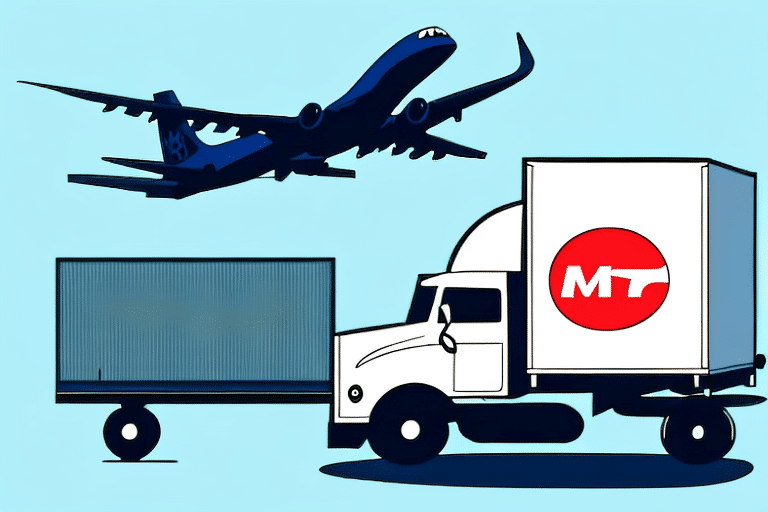Why E-Commerce Shipping Matters for Your Business
E-commerce shipping is a critical component of online business operations, significantly influencing customer satisfaction and loyalty. An efficient shipping strategy can determine whether a customer completes their purchase or abandons their cart, directly impacting your bottom line.
Providing fast, reliable, and affordable shipping options helps establish your business as trustworthy and dependable. In today’s competitive market, meeting and exceeding customer shipping expectations is essential to stay ahead. Moreover, an effective shipping strategy can enhance your brand reputation and encourage repeat business.
According to a report by Statista, approximately 75% of consumers expect free shipping as a standard for online purchases, underscoring the importance of shipping policies in customer decision-making.
Types of E-Commerce Shipping Options
Standard Shipping
Standard shipping is the most commonly offered and affordable shipping option. It typically involves delivery within 5-7 business days, depending on the carrier and distance.
Express Shipping
Express shipping provides faster delivery, usually within 2-3 business days. While it is more expensive than standard shipping, it caters to customers who prioritize speed over cost.
Same-Day Delivery
Same-day delivery is the premium shipping option, offering delivery on the same day the order is placed. This option is ideal for customers needing immediate receipt of their products, although it comes at a higher cost.
International Shipping
International shipping allows businesses to reach a global customer base. It involves additional considerations such as customs regulations, duties, and longer delivery times. Merchants must carefully evaluate whether the benefits of accessing international markets outweigh the complexities and costs involved.
Outsourcing E-Commerce Shipping
Outsourcing shipping needs to third-party logistics providers (3PLs) can offer numerous benefits, including reduced shipping costs, access to discounted rates, and specialized expertise. Outsourcing allows merchants to focus on core business activities while leveraging the logistics expertise of specialized providers.
Benefits of Using 3PLs
- Cost Reduction: 3PLs often have negotiated rates with carriers, leading to cost savings on shipping.
- Scalability: 3PLs can easily scale operations during peak seasons without the need for significant investments in infrastructure.
- Technology Access: Advanced logistics software provided by 3PLs enhances tracking, inventory management, and shipping efficiency.
For more information on the advantages of outsourcing shipping, you can refer to Investopedia’s guide on outsourcing logistics.
Choosing the Right Shipping Provider
Selecting an appropriate shipping provider is crucial for ensuring efficient and cost-effective shipping operations. Consider the following factors when choosing a shipping provider:
- Shipping Rates: Compare rates from different carriers to find the most competitive prices that fit your budget.
- Delivery Times: Ensure that the shipping provider can meet your delivery time requirements, especially for expedited orders.
- Tracking Capabilities: Reliable tracking systems enhance customer experience by providing real-time updates on shipment status.
- International Shipping: If you plan to serve international markets, choose a provider with robust international shipping services and experience handling customs documentation.
For more insights on selecting shipping providers, refer to resources such as Business News Daily’s guide on choosing 3PL providers.
Calculating and Managing Shipping Costs
Accurate calculation and management of shipping costs are vital for maintaining profitability. Consider the following when calculating shipping costs:
- Packaging Materials: The cost of boxes, padding, and other materials should be factored into the overall shipping cost.
- Labor Costs: Time and labor involved in packing and preparing orders contribute to shipping expenses.
- Carrier Fees: Different carriers have varying fee structures based on weight, size, and destination.
- Insurance: Shipping insurance protects against loss or damage, adding an extra layer of cost.
To manage shipping costs effectively, consider implementing flat-rate shipping options or offering free shipping thresholds to offset expenses. Additionally, leveraging shipping software can automate cost calculations and optimize shipping choices based on cost and efficiency.
For more detailed strategies on managing shipping costs, refer to the Shopify blog on managing shipping costs.
Best Practices for Packaging and Labeling
Effective packaging and labeling are essential for ensuring that products arrive safely and customers remain satisfied. Follow these best practices:
Secure Packaging
Use sturdy packaging materials to protect products during transit. Secure items with adequate padding to prevent damage from shocks and vibrations.
Clear Labeling
Ensure that all packages have clear and accurate labels, including the destination address, return address, and tracking information. Proper labeling minimizes the risk of lost or misrouted packages.
Eco-Friendly Materials
Adopt environmentally friendly packaging options, such as biodegradable or recyclable materials, to reduce your carbon footprint and appeal to eco-conscious customers.
For guidelines on packaging best practices, refer to the UPS packaging guidelines.
Tracking and Managing Your Shipments
Implementing effective shipment tracking and management systems enhances transparency and customer satisfaction. Utilize advanced shipping software to monitor shipment progress, estimate delivery times, and address potential issues promptly.
Real-Time Tracking
Provide customers with real-time tracking information, allowing them to monitor their order’s journey from the warehouse to their doorstep.
Return Management
Establish a streamlined returns process to handle returns efficiently, enhancing customer trust and loyalty.
Data Analysis
Analyze shipping data to identify trends, optimize shipping routes, and improve overall shipping efficiency. Data-driven decisions can lead to cost savings and better service levels.
For more information on shipment tracking solutions, visit ShipBob’s blog on shipping tracking for e-commerce.
International E-Commerce Shipping
Expanding your e-commerce business internationally presents opportunities for growth but also comes with additional complexities. Consider the following when engaging in international shipping:
- Customs Regulations: Understand the customs laws and import restrictions of the countries you are shipping to, ensuring compliance to avoid delays and fines.
- Taxes and Duties: Determine who is responsible for paying taxes and duties, and clearly communicate these charges to customers to prevent unexpected costs at delivery.
- Shipping Costs and Delivery Times: International shipping is often more expensive and takes longer than domestic shipping. Optimize shipping strategies to balance cost and speed.
For comprehensive guidance on international shipping, refer to resources like Shopify’s guide on international shipping.
The Future of E-Commerce Shipping
The landscape of e-commerce shipping is continuously evolving, driven by advancements in technology and changing consumer expectations. Key trends shaping the future include:
- Same-Day Delivery: Increasing demand for instant delivery solutions is pushing businesses to explore same-day delivery options.
- Contactless Delivery: Enhanced by the COVID-19 pandemic, contactless delivery methods prioritize safety and convenience for both customers and delivery personnel.
- Automated Shipping Software: Automation technologies streamline shipping operations, reducing manual errors and increasing efficiency.
- Sustainability Initiatives: The push towards eco-friendly shipping practices is influencing packaging choices and delivery methods to minimize environmental impact.
- Last-Mile Optimization: Improving last-mile delivery efficiency is crucial for reducing costs and enhancing customer satisfaction.
Keeping abreast of these trends and integrating relevant technologies will be essential for e-commerce businesses to stay competitive and meet evolving customer expectations.
In conclusion, e-commerce shipping is a vital element of any online business. By understanding various shipping options, managing costs effectively, implementing best practices, and staying updated with future trends, businesses can enhance their shipping operations, improve customer experiences, and maintain a competitive edge in the market.








